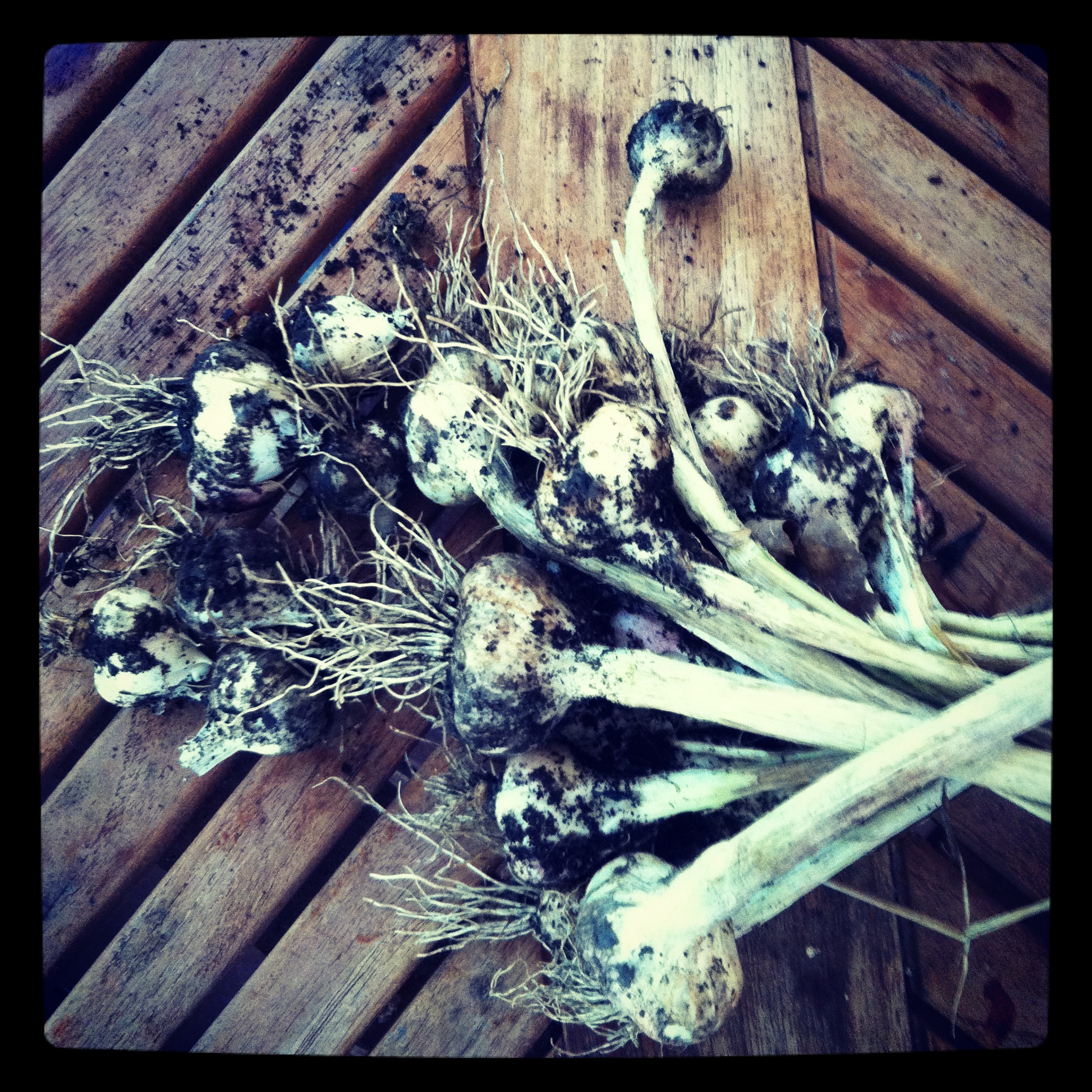
by: Kelly Roberts
 Garlic is one of my favorite things to grow in the fall. Probably because it is so easy to do and then you can just forget about it for the winter and go on about your business. Then in the spring the stems start shooting up as the soil begins to warm and then by the end of June to the middle of July you can harvest! It’s probably the lowest maintenance vegetable I grow all year. After it’s harvested as long as you hang it to let it dry and store it in a cool dark place you’ll have garlic for up to a year or longer depending on how much you grow and how much you use! ☺
Garlic is one of my favorite things to grow in the fall. Probably because it is so easy to do and then you can just forget about it for the winter and go on about your business. Then in the spring the stems start shooting up as the soil begins to warm and then by the end of June to the middle of July you can harvest! It’s probably the lowest maintenance vegetable I grow all year. After it’s harvested as long as you hang it to let it dry and store it in a cool dark place you’ll have garlic for up to a year or longer depending on how much you grow and how much you use! ☺
Garlic is packed with anti-inflammatory agents; it’s an anti-viral, anti-bacterial, and anti-fungal. It’s great for the skin, helps fight infection, prevents cancer, boosts the immune system, and helps with ear aches, coughs, and sore throats. It’s loaded with Vitamin-C, helps with fatigue and digestive problems, while it detoxifies your entire system.
Garlic is great to naturally add incredible flavors to spice up your food. I think the best way to enjoy it is to roast it with some olive oil until the cloves soften and then spread it across crusty bread. It’s so good you could possibly eat the whole thing! But hopefully the next day you won’t be going anywhere because garlic’s only downfall is that it can leave you smelling pretty ripe! But if you have garlic coming from your pores you know it’s doing what it’s supposed to!
Here’s how to add it to your garden and then forget about it till next spring.
1. Prepare your soil with some good compost or soil.
2. Dig 1 ½” or 2” holes and space them about 3” apart.
3. Take your bulb of garlic, (don’t get it from the grocery store-they’re sprayed so they won’t sprout-so make sure you buy from a seed/plant company-see some companies below.) break the bulb into smaller cloves
 4. Place root down into soil and then cover with soil.
4. Place root down into soil and then cover with soil.
5. Cover soil with organic or “clean” straw, pine shats, or anything organic to keep the soil as warm as possible throughout the winter.
6. Water, just to moisten the soil.
7. In about 2 weeks you should see little green sprouts. Then you can pretty much leave it till the soil warms back up in the spring.
I check on mine once a month to make sure they’re still covered up and if we go through a dry spell and the ground hasn’t frozen I’ll continue to water until we get a freeze. Then in the spring when it’s time to start gardening again just give them some more compost and some organic fertilizer and they should be good to harvest by late June into mid July for zones 6 and 7!
Where to buy garlic:
www.cooksgarden.com
www.burpee.com
www.territorialseed.com
Check out Kelly’s other posts on gardening and health at www.farmfoodieandfitness.com. Find out how she can help you with your health at www.balancedlivinghealthandwellness.com.
